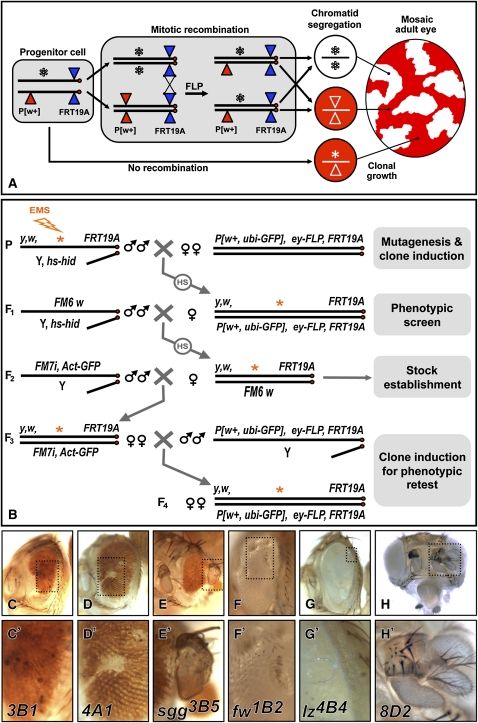Figure 1 .
Design and results of the screen. (A) During larval development of flies heterozygous for an EMS-induced mutation (*), ey-FLP induces mitotic recombination between FRT sites on duplicated homologous chromosomes. Chromatid segregation at mitosis can produce daughter cells homozygous for the mutation (*/*). In the adult eye, a P(w+) element on the wild-type chromosome allows homozygous mutant clones to be recognized by their lack of red pigment. (B) EMS-mutagenized FRT19A males were crossed to P[w+, ubi-GFP], ey-FLP, FRT19A females. Induction of the cell death gene head involution defective (hid) present on the Y chromosome by heat shock (HS) ensured that the F1 daughters screened were virgins. Selected females were mated to FM6, w, and then FM7i, pAct-GFP marked balancers to establish F3 mutant stocks. Four independent stocks for each mutation were retested by crossing to the ey-FLP line (F4). (C–H) Adult eyes showing mutant phenotypes. Ommatidia fail to differentiate in 3B1 clones (C), and transform into scars in 4A1 clones (D) or cuticle outgrowths in sgg3B5 clones (E). Males hemizygous for fw1B2 display reduced, bumpy eyes (F), while the retina of lz4B4 males is smooth and glossy (G). Ectopic antennae form in 8D2 mutant clones (H).

